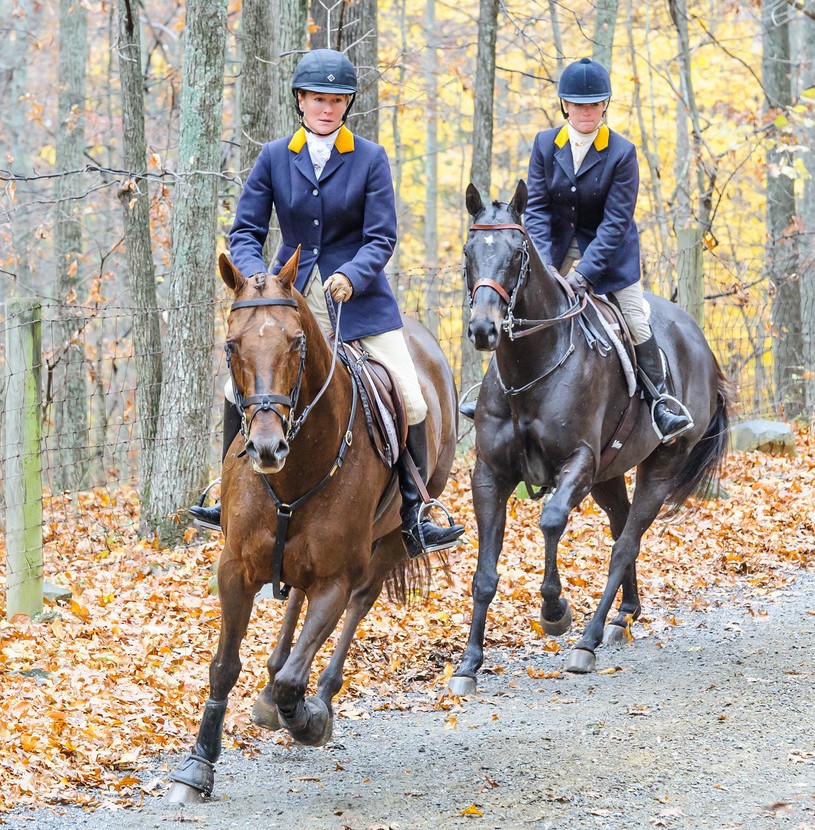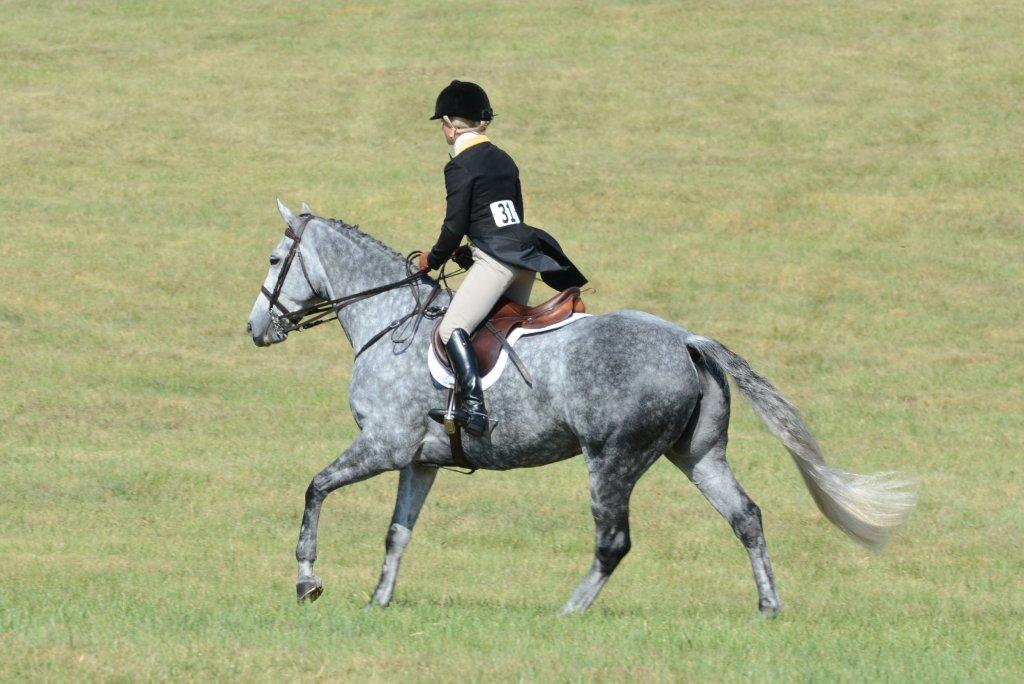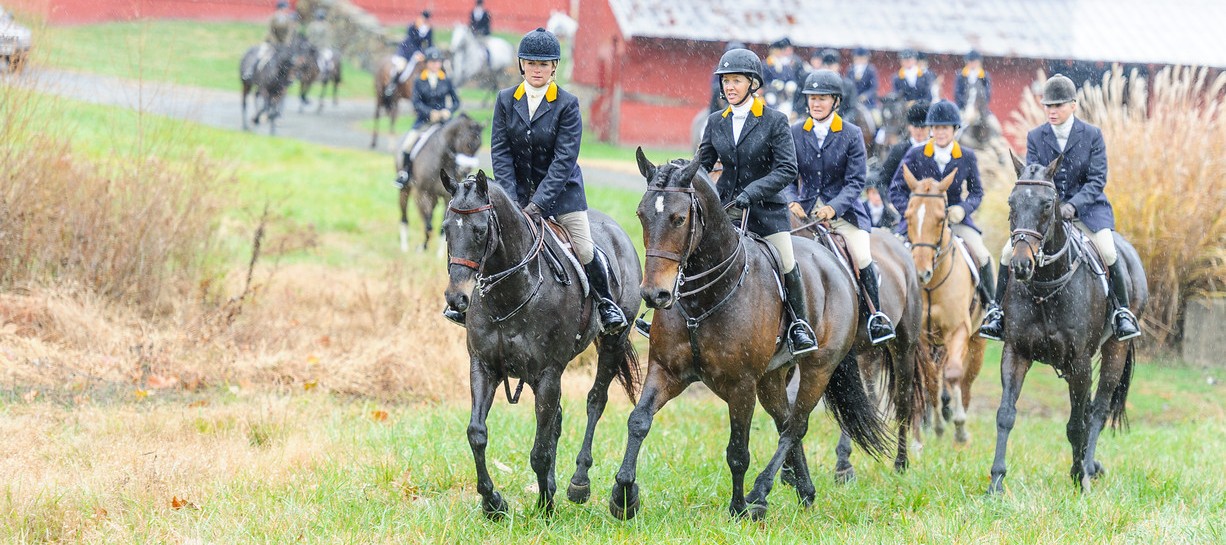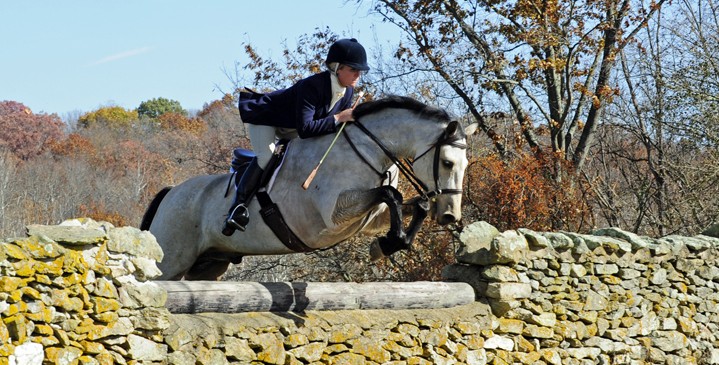Fox Hunting
Fox hunting is traditionally the sport of mounted riders chasing wild quarry with a pack of hounds. Horses used for fox hunting, commonly referred to as Field Hunters, must possess stamina, a level head, bravery, and have a surefooted way of going. Suitable fox hunting mounts must be sound, well-mannered and athletic. Any breed or type of horse may be used, but stamina and natural prowess over fences are prime considerations when selecting a foxhunter. Ill-mannered horses garner little respect in the hunt field and a horse prone to kicking may don a red ribbon in its tail and is usually relegated to the rear of the hunt.

While Maryland and Virginia are considered to be the birthplace of North American Fox hunting, today there are 156 organized clubs in North America and Canada and organized member hunts exist in 37 states.
The onset of fox hunting season usually begins in late August or early September, after crops are harvested. The season comes to a close as landowners begin preparing the earth for crop production in the spring. Fox hunting country is diverse and may include meadows, cornfields, forests, fields, and marshes.
Throughout a traditional hunt, stretches of galloping are often interrupted by natural and manmade fences. Stone walls, post and rail fences, ditches, creeks, fallen trees and a myriad of other obstacles may be negotiated during a hunt. For the less audacious equestrian, alternate routes, usually through gates or around obstacles, are more inviting avenues. When hounds catch scent of a fox and the fox leaves cover in favor of open country, the fox is said to have “gone away.” The chase begins when the hounds uncover a scent. Hounds will remain in pursuit until they lose a scent due to a change in terrain or weather conditions or through the evasiveness of the fox. Such a forced stop is considered a “check.” If a check occurs, the huntsman will often “lift” or gather the hounds, move to another covert and recast the pack (signal hounds to look for a scent). A pursuit will also end abruptly if the fox “goes to ground,” or finds sanctuary in a den or earthen hole.

Members of the hunt conform to a strict hierarchy while in the field. Protocol is always obeyed and breaches of etiquette are frowned upon. The hounds lead the group and they are followed closely by the huntsman and the whippers-in. The Master of Foxhounds and the field master, if present, lead the remainder of the field. The huntsman carries the hunting horn and controls the hounds in the field. Acting as extensions of the huntsman, whippers-in prevent hounds from becoming too scattered and reel in hounds which encroach on roadways or lands not open to hunting. The Master of Foxhounds holds the highest position in a hunt. One of the primary responsibilities of the Master of Foxhounds is to oversee the care, handling and breeding of the hounds. In addition, the Master schedules the locations of the hunts and nurtures relationships with landowners who allow the hunt to trek over their land.
Description courtesy of EquiNews


